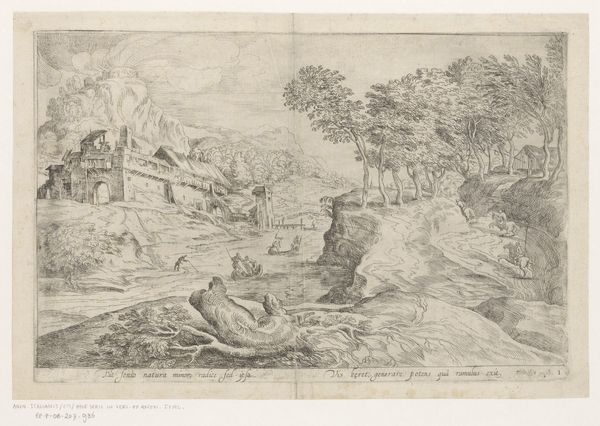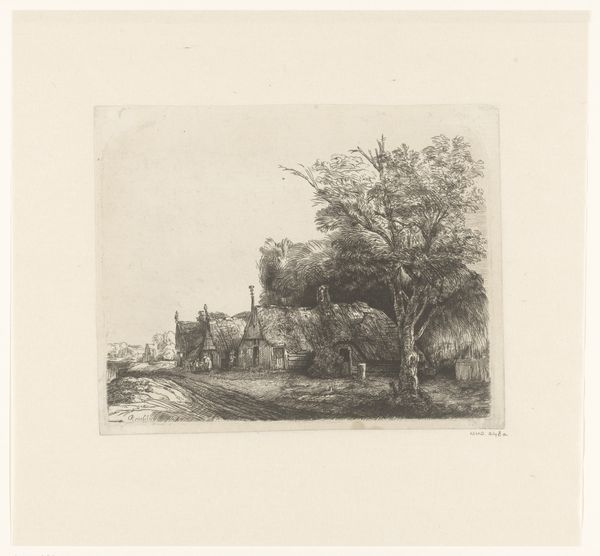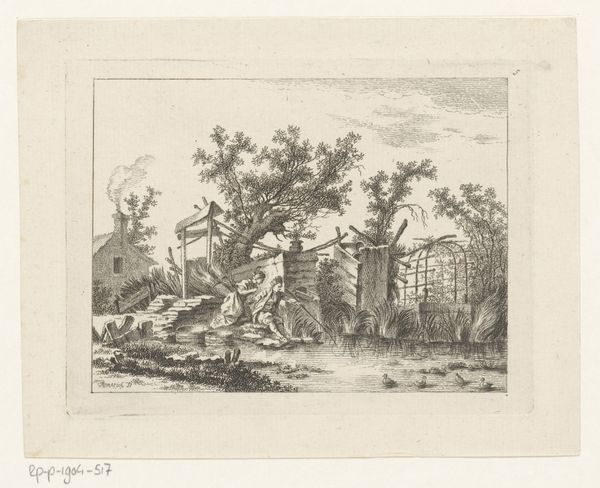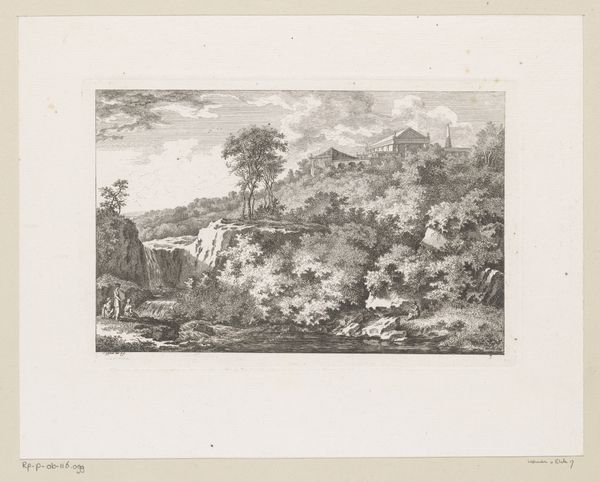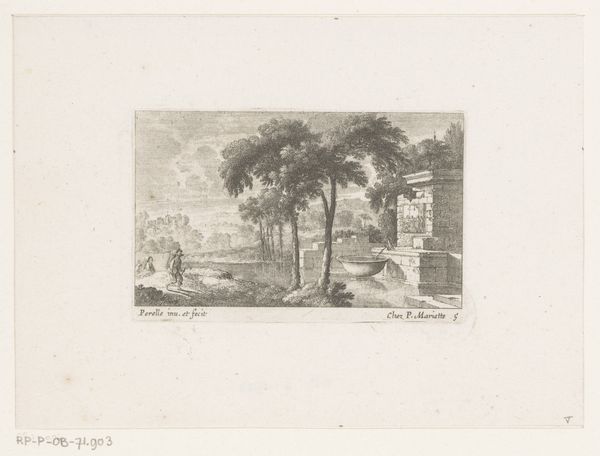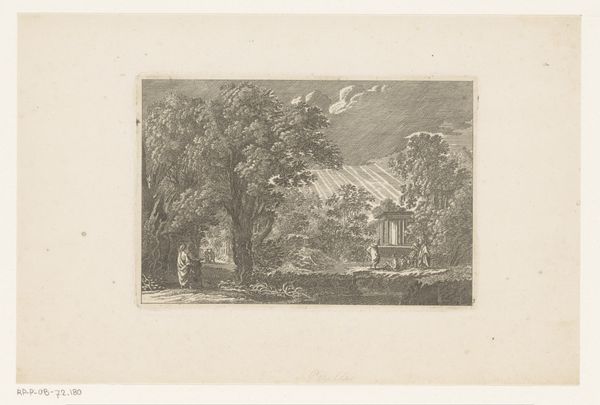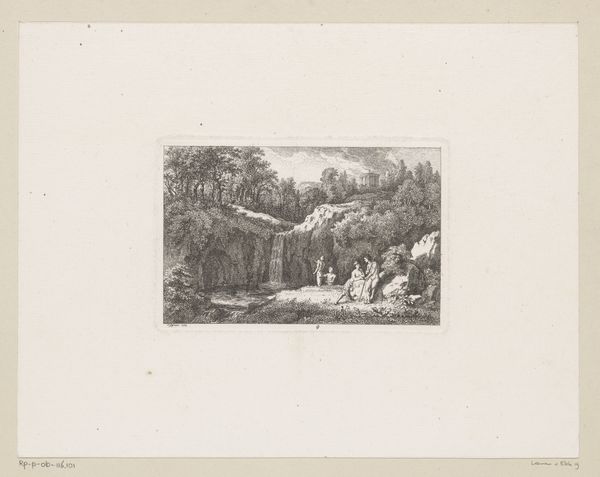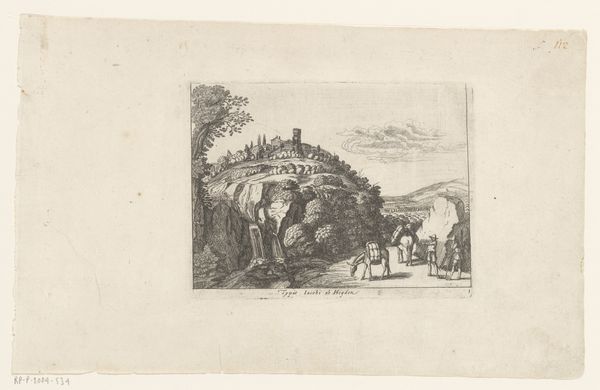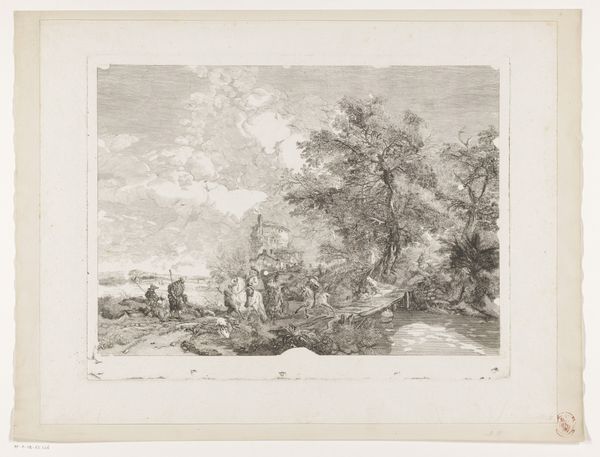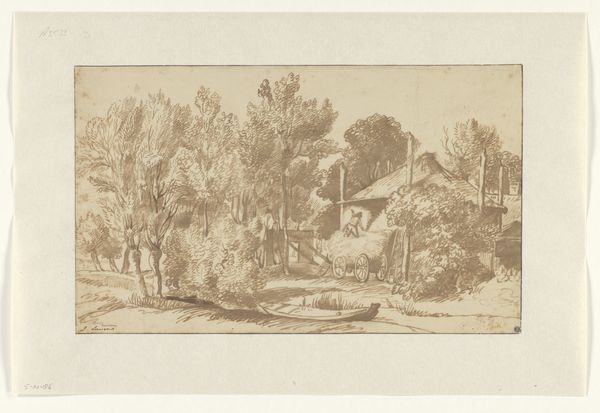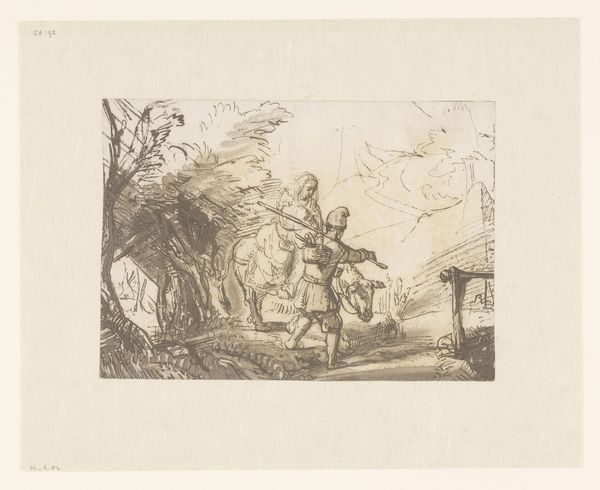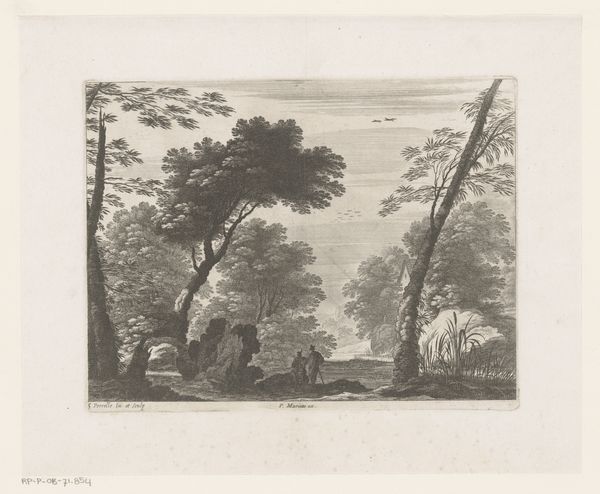
print, etching, engraving
#
dutch-golden-age
# print
#
etching
#
pencil sketch
#
landscape
#
etching
#
genre-painting
#
engraving
Dimensions: height 166 mm, width 213 mm
Copyright: Rijks Museum: Open Domain
Editor: This is "View with a Stone Bridge" by Frederick Bloemaert, dating from after 1635. It's a print, an etching really, held here at the Rijksmuseum. It strikes me as quite delicate, with very fine lines creating this detailed scene. How do you interpret the composition, with its emphasis on the bridge and figures? Curator: The beauty resides precisely in the formal arrangement. Note how Bloemaert uses the bridge to bisect the composition, creating a strong horizontal line that anchors the entire scene. The eye is drawn into the center but is then subtly redirected through the varied textures and tonal shifts created by the etching technique itself. Consider the light and shadow and how these direct your eye across the scene. Editor: So, it's less about what's depicted – the landscape, the figures – and more about how it's depicted? Curator: Precisely. The subject matter is secondary. It's the artist's control over line, tone, and form that truly defines the work. Observe, for instance, the repetition of curved lines—in the bridge's arch, the trees, and even the figures’ stances. This creates a visual rhythm, an underlying harmony that transcends the mere representation of a landscape. Editor: I see what you mean about the curved lines now. It's almost musical, the way they repeat and vary. Curator: The use of space, the balance of light and dark – these are the elements that contribute to its success as an artistic endeavor. Ask yourself how the structure of the image invites engagement with purely visual aesthetics? How does the framing affect your eye? Editor: This close formal analysis really changes how I see the artwork. It's less about what's there and more about how it all fits together. Curator: Precisely! By deconstructing the image into its constituent parts—line, form, tone—we begin to appreciate the artist's skillful manipulation of these elements and appreciate how Bloemaert creates artistic meaning.
Comments
No comments
Be the first to comment and join the conversation on the ultimate creative platform.

